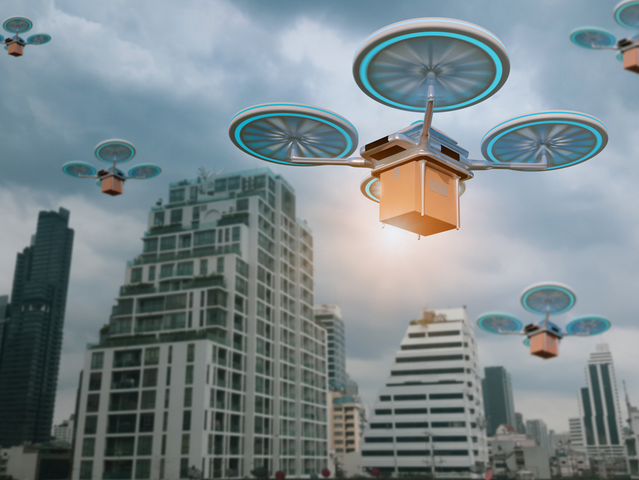U-space: taking safely to the skies Keeping aircraft safely separated is one of, if not, the core function of air traffic management today.
According to the 2016 SESAR Drones Outlook Study, it is expected that by 2035 the total flight hours of unmanned air systems (UAS) flying over dense populated areas will exceed 75% of the flight hours of the rest of the fleet. To face this challenge, the EC appointed SESAR Joint Undertaking (SJU) to develop U-space, a safe and secure drone traffic management for Europe. To this end, SJU has been fostering since 2015 the development of research projects targeting at developing and demonstrating U-space services within the SESAR 2020 programme. Among these projects, CORUS proposed a ConOps for U-space that pointed out that within VLL volumes within medium operational risk, pre-flight conflict resolution has to be provided, whereas within high operational risk volumes there must be also a ground-based tactical (in-flight) conflict resolution service. Other SESAR projects investigated technologies and architectures to provide conflict resolution. However, the separation minima that have to be applied, as well as the separation mode, are still to be determined. And although some separation minima have been proposed in the context of detect and avoid (DAA) systems, they cannot be easily extended to ground-based tactical conflict resolution systems. Separation minima are needed to define safety and performance requirements for U-space services and systems. In manned aviation, separation management is the second layer of conflict management within the ICAO ATM Operational Concept. The goal of conflict management is to limit the risk of collision between aircraft and hazards to an agreed level deemed as acceptable. The first layer of conflict management is the strategic conflict management, based on a pre-flight analysis of flight plans. When strategic conflict management cannot reduce the risk to an acceptable level, separation provision has to define a separator (the aircraft or a ground-based service) and a set of agreed procedures (separation mode) to be applied by the separator so as to keep aircraft beyond a minimum distance from hazards (separation minima) when a conflict is detected within a pre-defined conflict horizon. That process, well established in the manned aviation framework, is what BUBBLES intends to adapt to the particular features of UAS. To develop the ConOps for separation management for UAS, BUBBLES will use an innovative performance-based approach not applied yet to the U-space. This approach is inspired by the methodology used by EUROCAE to develop the ED261 (GEN-SUR-SPR) standard, which BUBBLES will adapt to the unique features of the U-space. BUBBLES will apply the methodology to a generic VLL airspace and will start by identifying the set of possible UAS missions that can take place therein. These operations will be represented by a reduced set of generic UAS ConOps. Using the single UAS PDRA and the estimated traffic density, the consortium will compute the frequency of conflicts within the generic VLL volume, while with the pair-wise PDRA, the researchers will calculate the conditional probability of collision in case of conflict. A generic operation services and environment description (OSED) will be defined by the aggregation of the expected ConOps and the available U-space services. BUBBLES will develop new AI techniques to determine the separation minima needed to guarantee a particular target level of safety (TLS) stated in terms of frequency of collision taking into account the results of the PDRA. Once the OSED is completed with the applicable separation minima, an innovative operational performance assessment (OPA) and an operational safety assessment (OSA) that will take into account the performance of the communication and surveillance systems in nominal and faulted modes will be performed to derive required performance specifications. Read more at: https://bubbles-project.eu/noticia/u-space-taking-safely-to-the-skies/(opens in new window)



